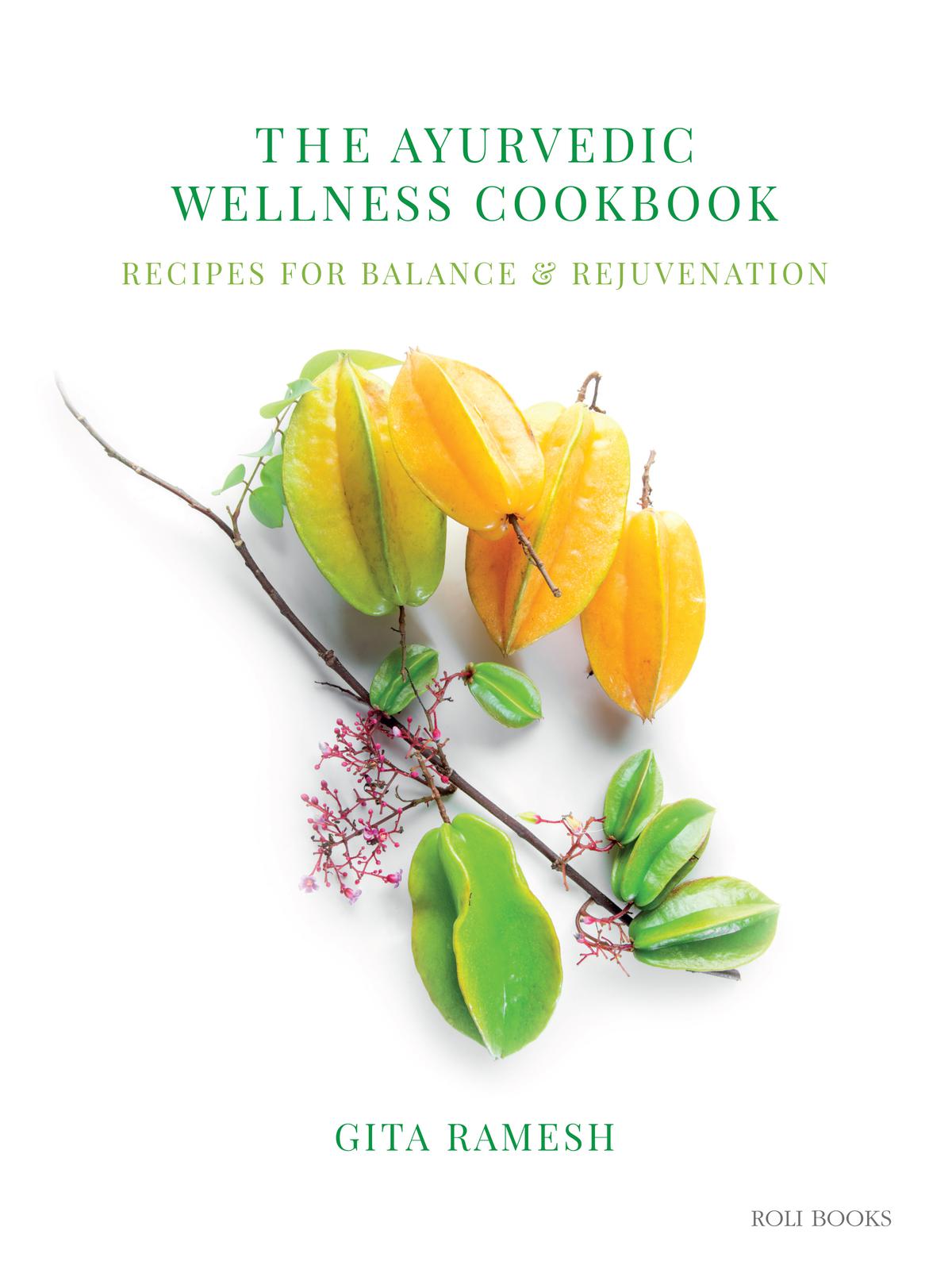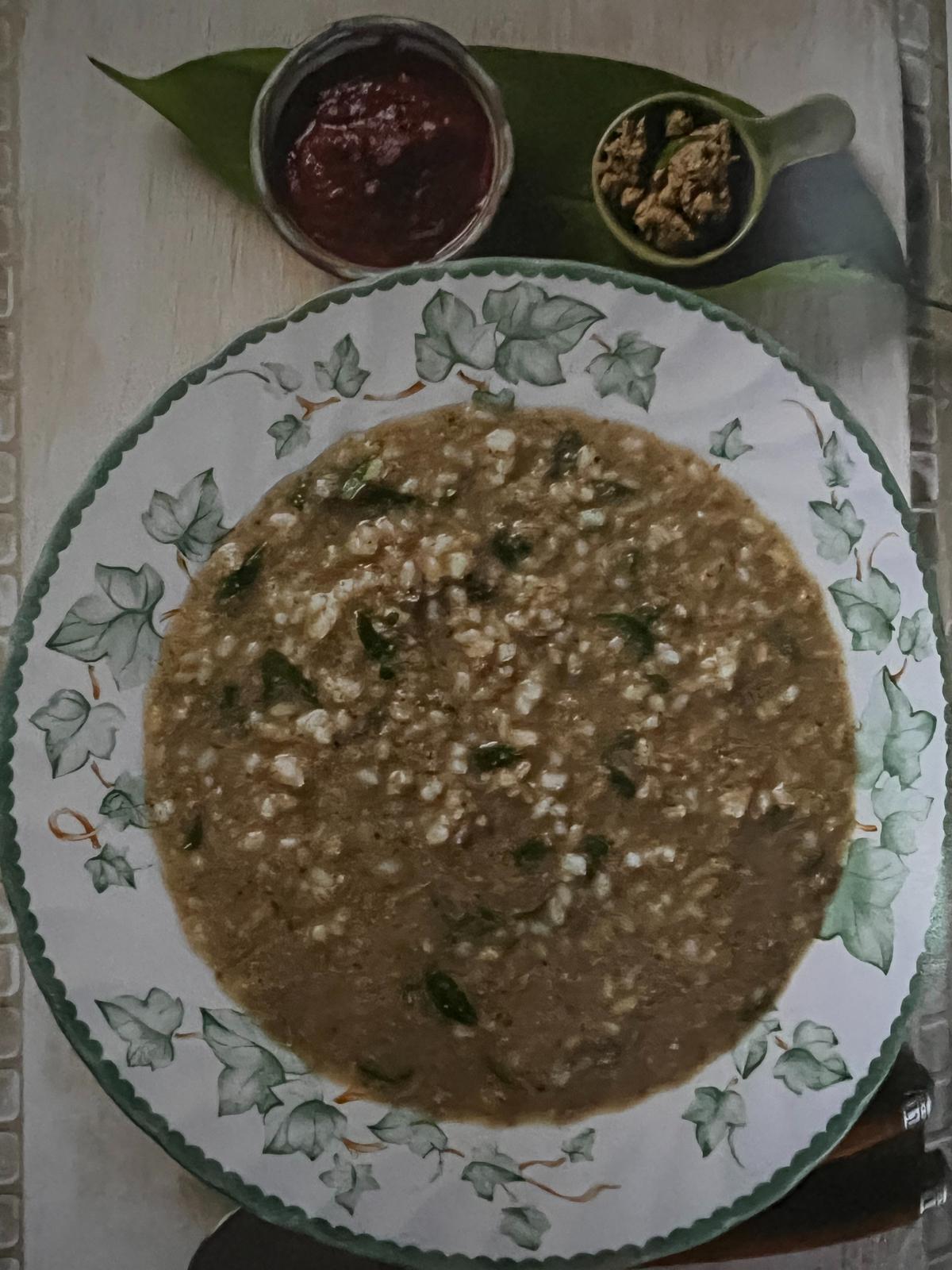“When mustard crackles in hot oil it releases its healing properties. That’s why tempering with spices like mustard, cumin, fenugreek seeds and adding turmeric is commonly used in Indian food. It is common to almost all recipes in Ayurveda,” says Gita Ramesh, author and entrepreneur. Her book, The Ayurvedic Wellness Cookbook: Recipes for Balance and Rejuvenation, won the best in the world Gourmand World Cookbook Award 2023 at UMEA Food in Sweden recently(July3). It was recognised in two categories —Vegetarian and Diet.
The Joint Managing Director of Delhi-based Kairali Ayurvedic Group, Gita did her Bachelor’s in Alternative System of Medicine and Master’s in Biochemistry. She has previously authored two books — The Ayurvedic Herbal Massage: with an easy to do self massage programme (1999), and The Ayurvedic Cookbook, Get fit in just two weeks (2013) — which were translated to various other languages, including Dutch.

Edited excerpts from an interview:
The book offers a wide range of options in vegetarian cooking. Tell us about that.
The book, as the title says, is about how to live healthy and to eat healthy. No overeating and always eating on time. It tells readers not only how to cook Ayurveda recipes but also how much to eat, and at what time to eat. There are recipes for people with each body type and for different lifestyle processes like rejuvenation, detoxification and panchakarma or internal cleansing. There are chapters on basic ingredients, cooking, substitutes for fizzy drinks and for beverages like tea and coffee. There are recipes of medicinal porridge with njavara rice(medicinal red rice) and different kinds of millets and chutneys. Actually it was with my second book that I wanted the the world to know that vegetarian food is delicious and healthy and one can make fantastic dishes using vegetarian ingredients.
This recognition is indicative of a changing attitude towards vegetarian food.
When you say how much to eat and at what time. What do you mean?
In Ayurveda, one does not count calories, instead we commit to a philosophy and a way of life. Ayurveda proposes that eating be a mindful, meditative experience, by making a shift to a way of slow eating, using freshly sourced, seasonal ingredients. . Ayurvedic diet is different for each body type. Dinacharaya or daily routine is an important part of Ayurvedic lifestyle. There’s a routine to follow at wake up hour, early morning cleansing and there’s not only a time to eat, but also the quantity to consume. Moderation of ingredients is vital to the science as it does not put a taboo on any ingredient. Even sugar is permitted in the form of jaggery, especially one sourced from coconut palm. Desserts can be prepared with that.
Plant-based food is naturally detoxifying.
Gita Ramesh
How did you start writing books on Ayurveda?
When we first established the Kairali Ayurvedic Centre in New Delhi in 1989, Kerala Ayurveda was not known in these parts, the way it is now. We wanted to promote it internationally and hence had to create tools to explain to people what we were all about. So I began writing about Ayurveda — its rituals, massages and treatments. The first book was all about the therapy we were bringing to the people. The second book was on Ayurvedic food and this is on food for wellness, panchakarma or the detoxification process of the body and was written during the lockdown.
Tell us about the Oushadha Kanji or medicinal porridge of which you have shared several versions.
There are various versions of the OushadhaKanji and it is consumed regularly during Karkidakam or the rainy months. One can change the herbs and spices to once’s choice. Like I have used various peppers like black pepper, and long pepper (Thippili). If you don’t like the kanji so spicy you could remove the black pepper, and the green chili. There is the uluva kanji (rice porridge with fenugreek), the yamam kanji (barley porridge), thinna kanji (foxtail millet porridge), chowari pachakari kanji (sago porridge with fresh vegetables), broken rice porridge with dried ginger and the common oushadha porridge made with red rice and mixed with herbs and spices. For consumers who don’t know much about cooking and would find this a little laborious to make this, there are ready made products in the market. All you have to do is use the right quantity of water and cook for the period required.

Aushadi Kanji (Kerala red rice porridge with mixed herbs and spices)
The book is aimed at the global reader, but what about the ingredients which are tropical?
Most western cities now have Indian stores that stock Indian vegetables and herbs. Tomato is not used in Ayurveda but can be consumed in moderation. The gourd is very common in Ayurveda but can be substituted with a vegetable that has high water content. In my recipes, one can play around with the essential spices like mustard, cumin, turmeric and fenugreek. Green gram is used profusely and can be consumed by kids and adults. It can be prepared whole or half split and had as soup or kanji. Ghee is a very important ingredient and I have mentioned how nutritional it is. Daily intake of coconut oil too is recommended.
What do you recommend as a daily routine?
I would say a daily massage with oil, better if it is medicated oil and a fixed eating routine.
The Kairali Ayurvedic Group is one of the pioneers in manufacturing Ayurveda medicines. Tell us about this.
My father-in-law K S Vasudevan set up Malabar Chemicals in Palakkad in 1962 -63 and was into researching Ayurveda products. He was the first to bring out an Ayurvedic weight reduction medicine in capsule form. He was also experimenting with an Ayurvedic injection. So we always had the R&D. After our centre in New Delhi, we planned to expand into treatment centres, which we did not want as a hospital but as a place to rejuvenate, with a resort like ambiance and no compromise with medicines and treatment. That’s how we started The Healing Village in Palakkad.
(The Ayurvedic Wellness Cookbook, published by Roli Books, is available online at ₹995)
Recipe
Oushadha Kanji (Kerala red rice porridge with mixed herbs and spices)
Serves -2
Cooking time-35 minutes
Ingerdients
Ajwain- 1/2 tsp
Fenugreek seeds-1 tsp
Cumin seeds-1 tsp
Fennel seeds-1/4 tsp
Dry ginger-1/2 piece
A pinch of nutmeg
Black peppercorn-1/2 tsp
Cloves-3
Cinnamon stick-1/2 inch
Cardamom pods-2
Thippili powder-1 tsp
Pepper powder-1/2 tsp
Kerala red rice-1 cup
Water-6 cups
Drumstick leaves-1 tsp
Basil leaves-1 tsp
Shallots-10, chopped
Green chili-1, chopped
Curry leaves- 1 stalk
Grated fresh coconut-1/2
Ghee-2 tsp
Salt, to taste
Method
1. In a frying pan over low heat, dry roast ajwain, fenugreek seeds, cumin seeds, fennel seeds, dry ginger, nutmeg, black peppercorns, clove, cinnamon stick, cardamom, thippili powder and pepper powder for two to three minutes until the ingredients are lightly browned. Remove from heat and cool for about five minutes.
2. Transfer them to a small dry blender. Powder finely on high speed for two minutes and set aside.
3. Rinse the rice thoroughly and soak it in 21/2 cups of water for about an hour. Drain the excess water.
4. In a pressure cooker over medium heat, add rice, drumstick leaves and basil leaves. Add the powdered ingredients and mix well with six cups of water.
5. Pressure cook the ingredients until the first whistle is released. Lower the heat and cook for another 20 minutes. Remover from heat and set aside for five minutes until the pressure releases on its own.
6. In a blender, add shallots, green chilli, fresh grated coconut and curry leaves and grind for two minutes at medium speed. Add the ground ingredients to the cooked rice.
7. Place the pressure cooker back over medium heat without its lid and cook the kanji for another two to five minutes.
8. Remover from heat, add ghee and serve hot by itself or with horse gram chutney.
Horse Gram Chutney
Mudhira Chammanthi
Serves -4
Cooking time-15 minutes
Ingredients
Horse gram(kulthi)-1/4 cup
Bengal gram(chana dal)- 1 tablesppon
Cumin seeds-1 tsp
Peppercorns-8
Grated coconut-2 tablespoons
Tamarind-1 tsp
Salt to taste
Water- 2 to 4 tablespoons
Tempering
Coconut oil-1 tsp
Mustard seeds-3/4 tsp
Split black gram(udad dal)- 1/2 tsp
Asafoetida- a pinch
Curry leaves- 1 stalk
Method
1. In a medium-sized wok over low heat, dry-roast horse gram for five minutes till slightly browned. Remove from heat and set aside to cool in a plate.
2. In the same wok over low heat, add Bengal gram, cumin seeds, peppercorns and coconut, and roast for three minutes. Remove from heat and let it cool for a minute.
3. Add the bengal gram spiced mixture to a blender. Add roasted horse gram, tamarind, salt and water. Grind at medium speed for three minutes to form a semi-coarse paste
To make the tempering:
In a small frying pan over medium heat , add oil. Add mustrad seeds and let them sputter for 10 seconds. Add split black gram, asafoetida, curry leaves and mix well. Remover from heat and add the chutney.
For all the latest Life Style News Click Here
For the latest news and updates, follow us on Google News.
